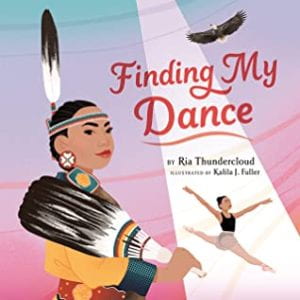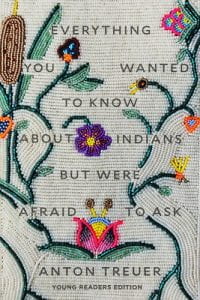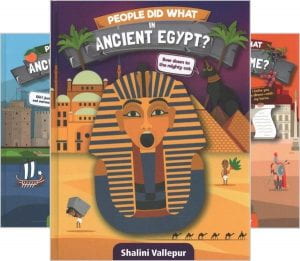 Thundercloud, Ria. Finding My Dance. Illustrated by Kalila J. Fuller. Penguin Workshop, 2022. 978-0-593-09389-4. Unpaged. $18.99. Grades K-5.
Thundercloud, Ria. Finding My Dance. Illustrated by Kalila J. Fuller. Penguin Workshop, 2022. 978-0-593-09389-4. Unpaged. $18.99. Grades K-5.
At four years old, Thundercloud is given a beautiful, hand sewn jingle dress with “silver cones that clinked together and made the most beautiful sound…like rainfall.” Thundercloud is from the Ho-Chunk Nation (Wisconsin and Sandia Pueblo, New Mexico) who values dance, and she is told that her dances will “send blessings to everyone watching.” So begins Thundercloud’s journey into the powwow circle where Indigenous people gather to “honor [their] culture through song and dance.” Every summer while her love for dancing continues to grow, Thundercloud and her brothers travel the powwow trail. Progressing through different traditional Native dances, she also is on an internationally recognized dance team and studies styles of dance that students may recognize: modern, jazz, tap, contemporary, and ballet. The confining structure of styles like ballet, though, sometimes make Thundercloud feel “like an outsider.” While she was the only Indigenous girl in a class and had her name constantly said incorrectly, dance always made her feel better. Later a professional dancer, Thundercloud never loses sight of her roots. Colorful illustrations beautifully capture Thundercloud’s emotions and passion for dance. A moving tribute to traditional Indigenous dancers, Finding My Dance will be enjoyed by anyone who appreciates the art and beauty of dance.
THOUGHTS: Highly recommended for elementary collections, especially those looking to add Indigenous representation.
Picture Book Maryalice Bond, South Middleton SD
Biography


